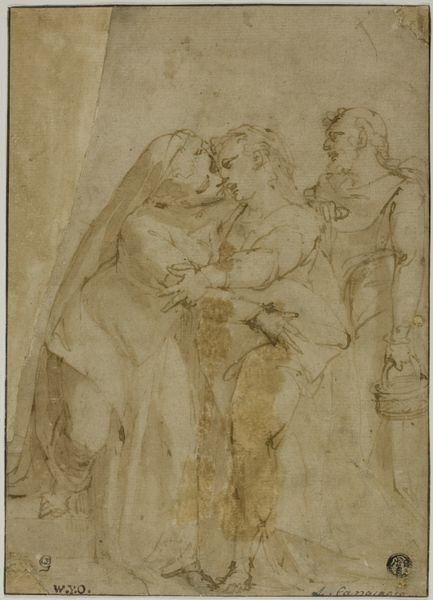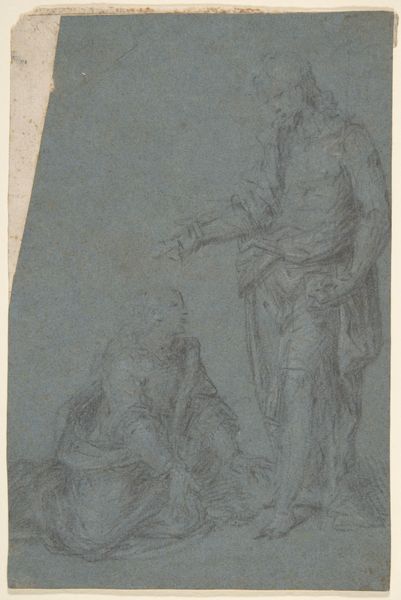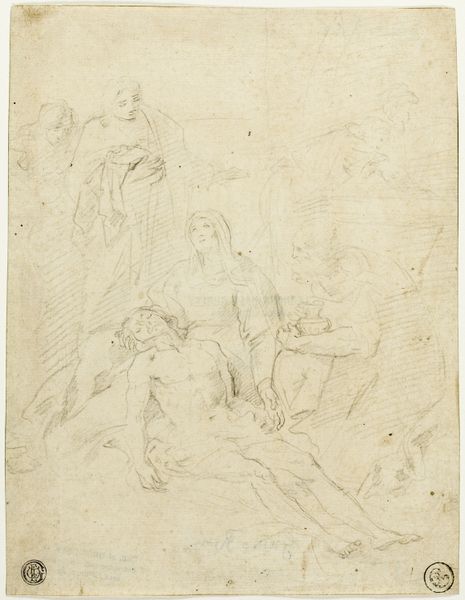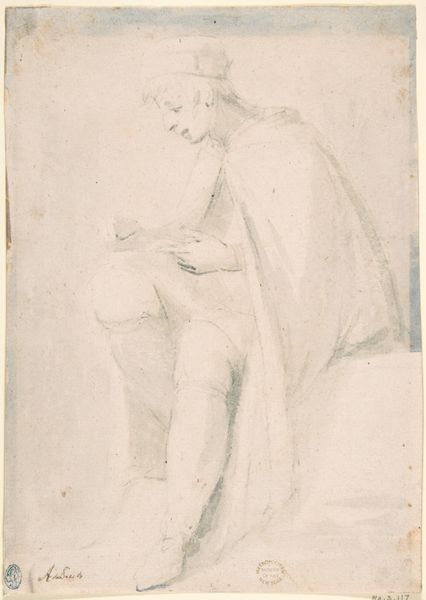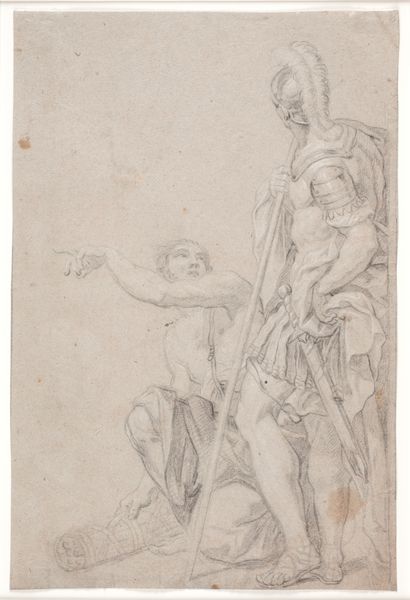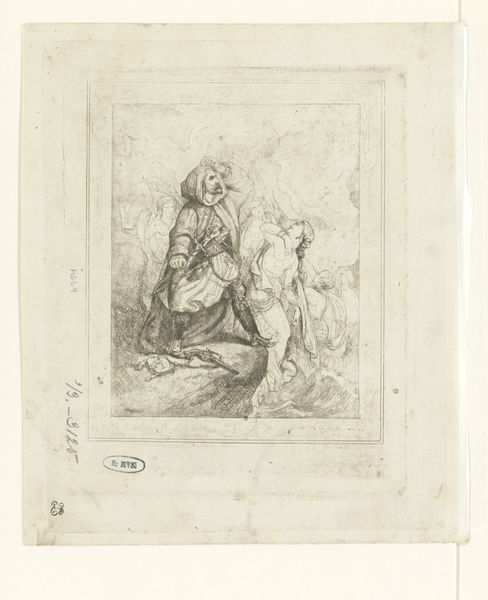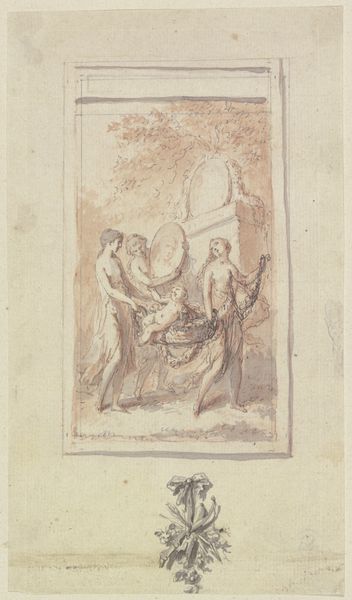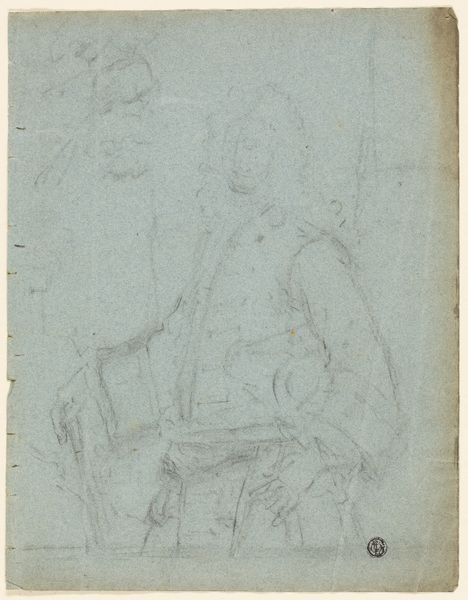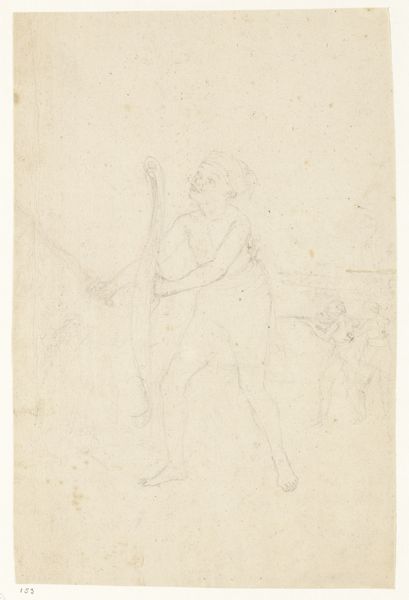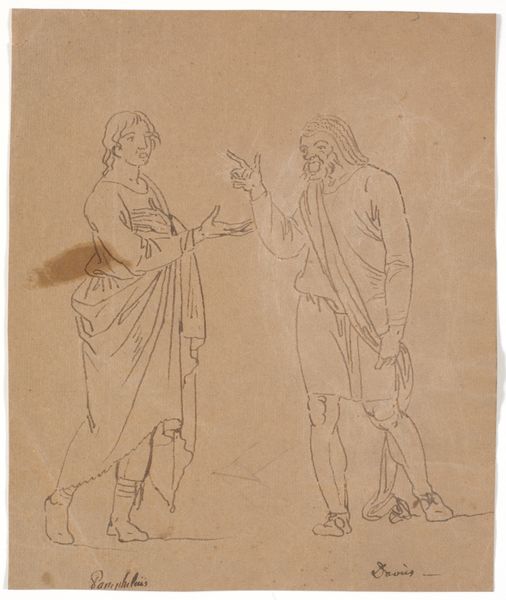
drawing, pencil
#
portrait
#
drawing
#
narrative-art
#
pencil
#
history-painting
#
academic-art
Dimensions: 175 mm (height) x 111 mm (width) (bladmaal)
Editor: Here we have Dankvart Dreyer's "Christ and a Kneeling Disciple," a pencil drawing from around 1831 to 1852. There's an undeniable sense of reverence here. What do you see in the composition and line work of this piece? Curator: Indeed. Looking closely, observe how the artist employs line weight to delineate form. The preliminary nature of the sketch allows us to witness the artist's process – his search for the essential lines defining the figures of Christ and the kneeling disciple. Notice the architectural framing at the top; the slight arch creates a clear, dedicated space for these two subjects. What strikes you about the spatial relationships? Editor: I'm intrigued by how Dreyer used light. Though it’s a pencil sketch, the lightness and barely-there quality seems to create a space for... something else. Almost as if light itself is another element in the composition. What do you make of that openness, and that unfinished quality? Curator: Consider the tonal range; it lacks dramatic contrast, yet this uniformity contributes to a spiritual aura. The figures appear weightless, almost floating within the space, and light could almost be said to emanate from them both. How might the ethereal, almost incomplete state of the drawing contribute to its overall meaning? Editor: So the lack of strong lines paradoxically amplifies the spiritual meaning? Curator: Precisely. The artist utilizes the very medium of pencil to explore the interplay between form and light. In this way, the material and composition are inseparable, forming a poignant expression. Editor: That's given me a whole new way of appreciating the artistry, thank you. Curator: My pleasure. It has given me much to consider as well.
Comments
No comments
Be the first to comment and join the conversation on the ultimate creative platform.

